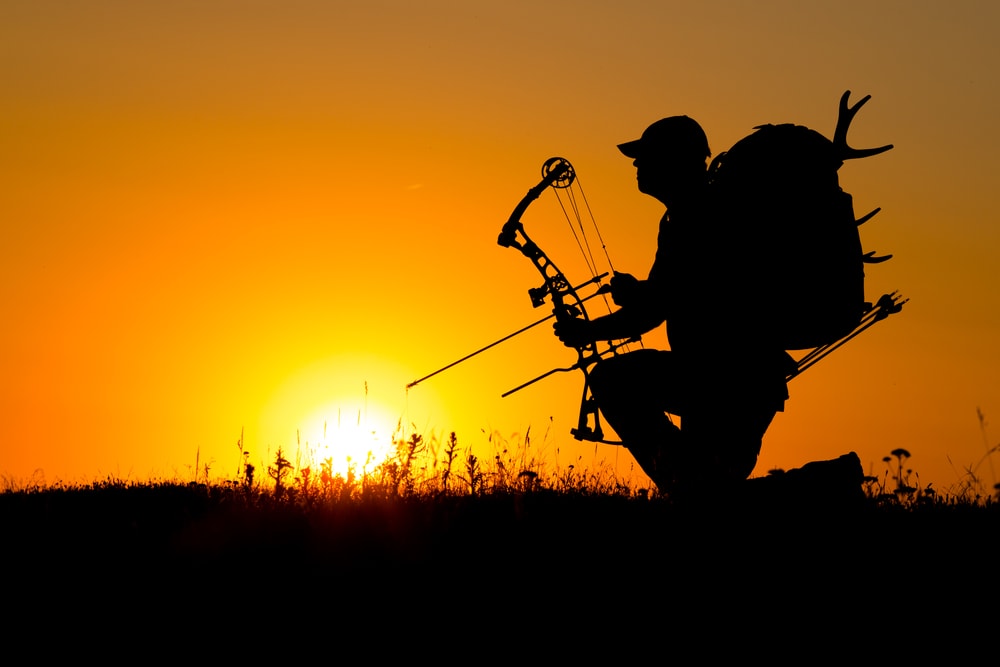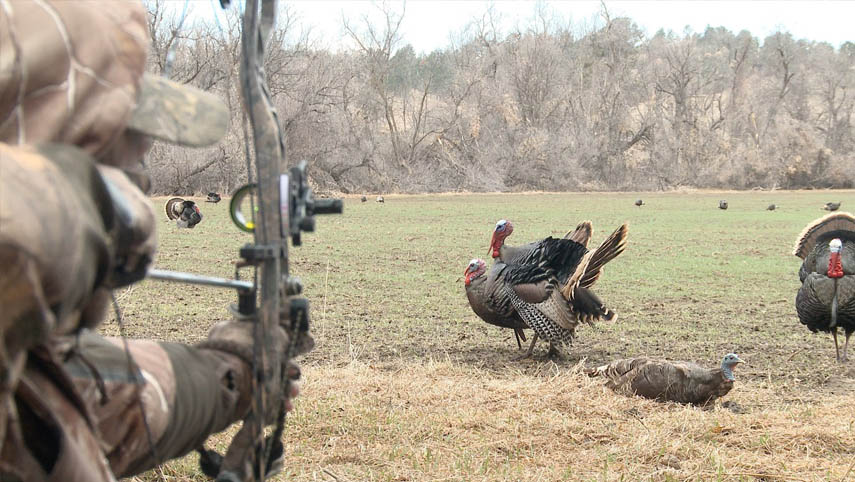
Similar to any sport, archery also requires you to cover all the safety bases before getting started. Aside from protective gear and equipment, you also need to secure a small piece of accessory called a thumb ring. This protects the skin on the inner pad of the archer’s thumb, where the bowstring rests.
If you’re practicing Asian- or Northern African-style archery, then these must-learn thumb ring details we’ll discuss today should be pertinent to your journey. With this info, you’ll be one step closer to turning archery into a long-term, healthy practice.
Page Contents
Must-Know Facts About the Thumb Ring
A thumb ring is an important piece of equipment that protects the thumb of every thumb-drawing archer. Here’s what else you need to know about this essential accessory.
Thumb Ring in Asian Archery
Most people practicing archery in the West have never heard of, let alone seen, the thumb ring. However, it is a prominent feature in the Asian version of the sport. The Turks, Mongols, and Koreans have been using this accessory to draw their bows for a long time.
Technically, it isn’t just the thumb that draws the bow, since the index and second finger help perform the task, too. As you pull the bowstring back, it ends up resting on the pad of the first thumb joint. This is where the thumb ring comes in for protection.
The thumb ring, together with the thumb, also acts as the lever, and the joint assumes the role of the fulcrum. The bowstring, which acts as the load, sits against the ring, just past the thumb joint. The ring and tip of the thumb are then held using the second and index fingers. With the palm held down, this is the final position an archer assumes before he or she releases the arrow.
This thumb-and-two-finger technique allows you to position your hands more ergonomically and create a much stronger draw. Looking at the release, you’d think the technique behind it was developed quite recently and not thousands of years ago.
Types of Thumb Rings
Thumb rings come in different shapes and styles of cuts. They are also made of different materials, like metal, stone, horn, antler, bone, wood, glass, ceramic, and plastic. Some of the most commonly used thumb rings are the Turkish and Korean. They are what most modern-day archers are familiar with.
No matter what kind of thumb ring you end up using, you have to remember that shooting safely and correctly means wearing one that fits properly. Wearing an ill-fitting thumb ring can make shooting arrows painful and may even lead to injury.
How to Fit Thumb Rings
Now that you know what a thumb ring is, let’s move on to the second most important step: fitting one correctly. This can be done in one of two ways.

Fitting a Customized Thumb Ring
If you’re really serious about archery, you’ll want to get a customized thumb ring. You can go about this by visiting an archery shop, where they use a slide caliper, or at home, using a sheet of paper.
If you decide to do it at home, follow these steps:
Step 1: Cut a thin strip of paper about four inches long. Measure the paper using your thumb.
Step 2: Move it up and around your thumb knuckle to check whether or not it slides off easily.
Step 3: Adjust the paper depending on the level of resistance. Loosen or tighten the wrapper paper until it slides off the thumb comfortably.
Step 4: Using a pen, mark the area where the two ends overlap.
Step 5: Get a ruler and measure the length of the wrapped paper that fits most comfortably. That’s the size of your thumb ring.
How about if you decide to get an off-the-shelf thumb thing?
Fitting an Off-the-Shelf Ring
If you’re buying a thumb ring from a shop, you could also use the thumb ring size from the previous step as a basis.
Try putting the ring on, turning it sideways so that it’s easier to slide over the knuckle. Take note that although the ring should fit snugly around your thumb, it should not be too tight. Once it’s on, the ring mustn’t be able to slide over the thumb knuckle. It may rotate backward or forward slightly, but that should be as far as it goes.
Removing the ring shouldn’t be too hard, either. It should only take you turning it sideways to slide it off your knuckle.
Also, note that the thumb typically swells when shooting with a ring. Make sure to factor this in when measuring your thumb ring; otherwise, you might end up with one that gets stuck to your thumb later on.
Here’s a video explaining in detail how to use a thumb ring:
Conclusion
Simply put, a thumb ring is a protective accessory used in most Asian and Northern African styles of archery. More than safeguarding the inner pad of the thumb joint, it also allows archers to shoot more efficiently over long periods.
Unless you’re looking to practice the Ishi or American-Indian style of archery, which involves thumb drawing without skin protection, then a thumb ring is essential to your journey. Not only can this accessory help you progress faster, but it can also allow you to practice modern archery safely.
What accessories do you need for American-Indian archery?
Archery is a fantastic sport and the gear industry is incredibly generous. As a matter of fact, new archers will find a bit overwhelmed by the numerous accessories they can choose from. Some of these accessories are crucial for drawing your bow, whereas others are less important and you may perfectly do without them. As with anything else in life, you will have to go and draw your bow over and over again until you figure out what accessories help you have a perfect shot each time.
Essential items you need for archery
It goes without saying that you cannot shoot your bow unless you have a bow. Apart from the bow, a few other items are just as important.
The bow
You don’t need to be an experienced archer to know that you have to buy a bow in archery. We recommend you buy one according to your budget. Spend some time choosing the bow that fits your skills, purpose, and budget.
The bow stringer
If you opt for a recurve bow, you will also need a bow stringer as it’s crucial for safe and consistent stringing. It helps you use your body weight to bend the recurve bow and slip the string over the limb tips.
Arrows
You will need more than one arrow for archery. Most of them come in a 6-pack and we recommend you buy them when you buy your bow. The bow technician in the sporting goods store can help you pick the bow and the arrows. Otherwise, you should at least read a guide on selecting arrows.
Nocking Points
The nock point will give you a constant place on the bowstring to nock your arrows. It’s important because it ensures consistent shooting and your arrow will go where you want it to go. The nock point prevents you from nicking the bow hand with the arrow’s vanes or fletchings. You can use tape, serving string, or brass points to make a nock point.
Targets
Targets are also crucial for practicing and you can use simple or complex—you decide. Along with the target, you also need a backstop to stop your arrows from getting right through the target. You don’t want them to go into a person’s arm or fence. Look for foam blocks in stores or use at least some hay bales.
Recommended, but not mandatory items
The following accessories are nice to have, but you shouldn’t stress about not having them initially. These accessories are more about improving your comfort when drawing your bow. However, if you want to make your archery as enjoyable as possible, we encourage you to buy at least some of them.

Arm Guard
The arm guard will cover your forearm or even the whole arm and keep your hair, skin, and sleeves out of the way when releasing your arrow. When you learn the correct technique, you also find out about how to adjust your elbow vertically to keep your arm out of the way of the string. Since you will need some time to get there, you should put on an arm guard to cover as much of your arm as you can.
Arrow rest
You should consider buying one when the bow doesn’t come with an arrow rest. You can either choose a fixed rest or a complex drop-away rest that falls out of the way after you release the arrow. Some archers use their hands as a makeshift arrow rest, but it is good to use when practicing drawing your bow.
Glove or Finger Tabs
If you don’t use something to protect your fingers, you will have to deal with blisters that can alter your release. Use a leather glove or finger tabs on your shooting hand to avoid developing blisters. The modern finger tabs also have spacers that spread the middle and index fingers apart, which stops you from pinching the arrow. Many archers make their finger tabs as patterns/kits are readily available.
Bowstring wax
Each strand of your bowstring is made of millions of fibers. If it’s not correctly lubricated, the fibers will rub together and cause friction; soon enough, the strands will snap, and the string will last shorter than expected. Archers use bowstring wax to add a protective layer against water and elements that impede the bow’s performance. You should wax your bowstring every 2 to 4 weeks.
Broadhead Wrench
The broadhead wrench lets you unscrew the broadhead tip from your arrow so that you don’t slice your fingers. You don’t need it if you only use field tips, but only after using broadheads.
Optional items
None of the items down below are mandatory. However, you should consider them the more you do archery as they make archery more fun.
Sight
You use the sight to aim your bow. Most recurve bows don’t come with sights as the archers, like instinctive shooting or shooting without the help of sight (or any other point of reference). It doesn’t mean you shouldn’t consider using sights, especially in the beginning when they can help you where to look and how to aim.
String whisker silencer
Whisker silencers are lightweight rubber silencers that decrease the noise of the bowstring without altering your bow’s performance. If you only do target or backyard archery, you won’t need to use string whisker silencers. However, they make for excellent accessories to the bowstring once you begin bow hunting.
Quiver
The quiver is a recipient you use to hold your arrows before shooting them. Some quivers allow attaching to the bow, whereas others are easy to wear around the shoulder or the waist. The quiver speeds up the pulling of a new arrow. It’s not essential but helpful.

One last thought
Archery is a fantastic sport and you will need a lot more than a bow and some arrows to become great at it. Patience and determination aren’t something to find in stores, but you will find a wide range of accessories to help you build your shooting skills and discover the style you like most.








